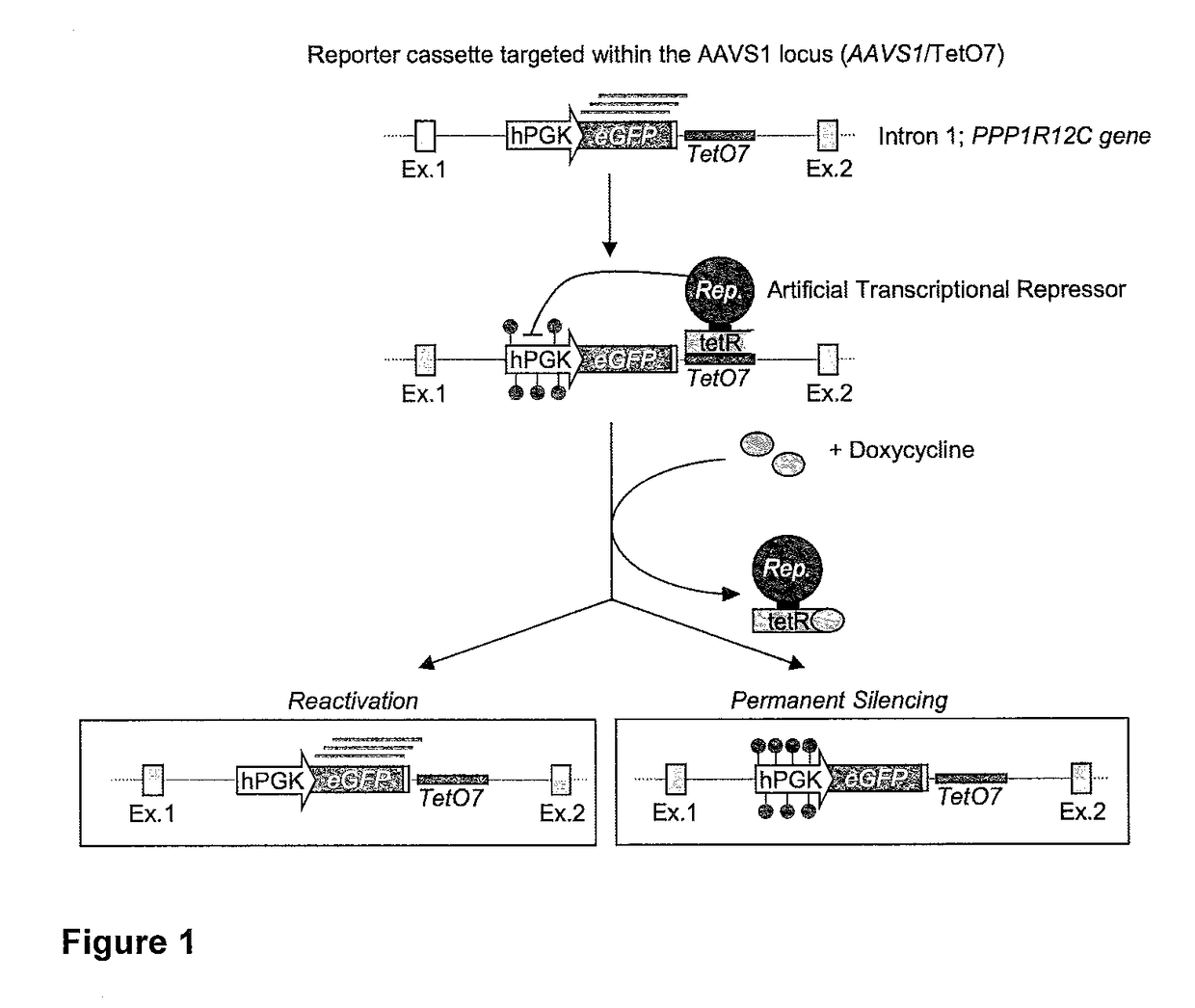Permanent Epigenetic Gene Silencing
a technology of epigenetic silencing and epigenetic editing, applied in the direction of peptide/protein ingredients, transferases, peptide sources, etc., can solve the problems of low efficiency, jeopardizing the efficacy of these treatments, and inability to inactivate wide non-transcribed regulatory elements, etc., to achieve robust and heritable states of transcriptional repression
- Summary
- Abstract
- Description
- Claims
- Application Information
AI Technical Summary
Benefits of technology
Problems solved by technology
Method used
Image
Examples
example 1
[0355]With the aim of recapitulating the endogenous epigenetic mechanisms that permanently silence endogenous retroviruses (ERVs) during development, we employed the Krüppel-associated box (KRAB) domain of human zinc finger protein 10 (ZNF10; Szulc, J. et al. (2006) Nat. Methods 3: 109-16) and the catalytic domain of human DNA methyltransferase 3A (DNMT3A; Law, J. A. et al. (2010) Nat. Rev. Genet. 11: 204-20). The amino acid sequences of these domains are shown in Table 1.
[0356]To test the activity and stability of gene silencing induced by these two effector domains we used the tetracycline (tet) responsive system. We separately fused the two effector domains to the E. coli tetracycline-controlled Repressor (tetR) DNA-binding domain (Gossen, M. et al. (1992) Proc. Natl. Acad. Sci. USA 89: 5547-51), generating the tetR:KRAB and the tetR:DNMT3A artificial transcription repressors (ATRs, hereafter referred as tetR:K and tetR:D3A, respectively). The advantage of the tetR system is that...
PUM
| Property | Measurement | Unit |
|---|---|---|
| concentration | aaaaa | aaaaa |
| pharmaceutical composition | aaaaa | aaaaa |
| resistance | aaaaa | aaaaa |
Abstract
Description
Claims
Application Information
 Login to View More
Login to View More - R&D
- Intellectual Property
- Life Sciences
- Materials
- Tech Scout
- Unparalleled Data Quality
- Higher Quality Content
- 60% Fewer Hallucinations
Browse by: Latest US Patents, China's latest patents, Technical Efficacy Thesaurus, Application Domain, Technology Topic, Popular Technical Reports.
© 2025 PatSnap. All rights reserved.Legal|Privacy policy|Modern Slavery Act Transparency Statement|Sitemap|About US| Contact US: help@patsnap.com



